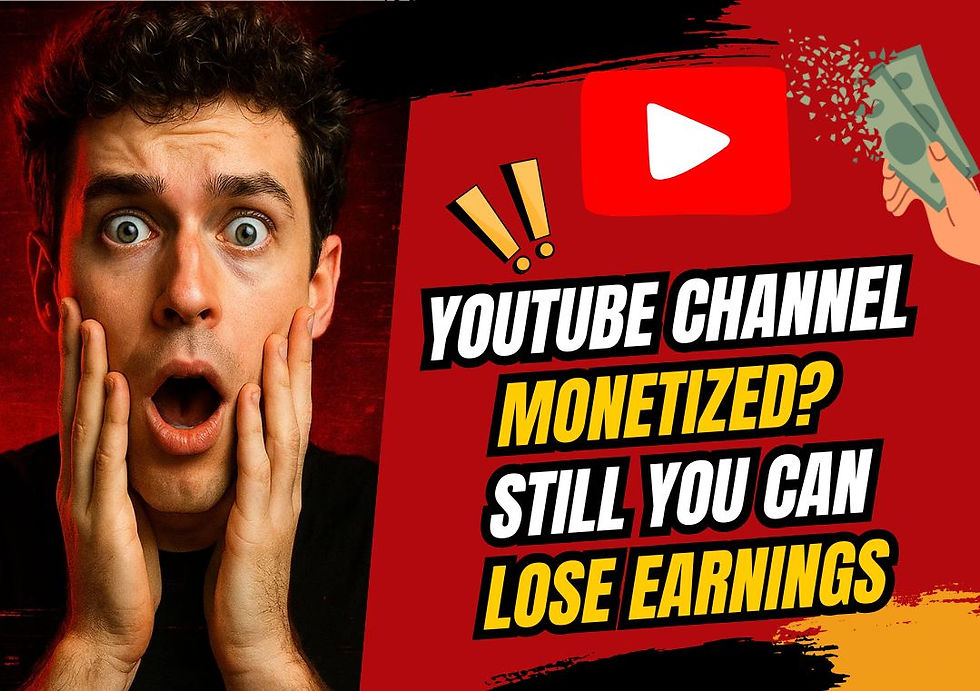Content Marketing vs. Copywriting: Which Strategy Drives Results for Your Business?
- Kubra Killedar
- Jan 22
- 3 min read

In today's competitive digital landscape, businesses need a well-rounded approach to marketing to stand out. Two important strategies that often come up are content marketing and copywriting. While both serve distinct purposes, many businesses may wonder which one is more effective for driving results.
This blog will explore the differences between content marketing and copywriting, helping you determine which strategy will best suit your business goals.
What is Content Marketing?
Content marketing is a long-term strategy that focuses on creating and distributing valuable, relevant, and consistent content. The main goal is to attract, engage, and retain a target audience. Unlike traditional advertising, content marketing does not focus on directly selling products or services. Instead, it educates, informs, and entertains your audience, gradually building trust and loyalty over time.
Types of Content Marketing:
Blog posts and articles
Social media updates
Ebooks and whitepapers
Webinars and podcasts
Videos and infographics
What is Copywriting?
Copywriting is a strategy aimed at persuading the audience to take immediate action. Whether it's making a purchase, signing up for a newsletter, or clicking on a link, copywriting is designed to drive conversions. It is often more direct and focused on selling, using persuasive language and clear calls to action.
Types of Copywriting:
Sales pages
Product descriptions
Email campaigns
Advertisements (e.g., Facebook ads, Google ads)
Landing pages with calls to action (e.g., "Buy Now")
Key Differences Between Content Marketing and Copywriting
Objective and Focus
Content Marketing: The main goal is to build a relationship with your audience by offering value. This could be in the form of useful information, entertainment, or problem-solving. The focus is on long-term engagement and nurturing the audience over time.
Copywriting: The goal of copywriting is immediate action. Whether you want your audience to make a purchase, sign up for an event, or download an eBook, copywriting is focused on generating direct responses.
Content-Type
Content Marketing: Typically includes educational, informative, or entertaining content, such as blog posts, podcasts, videos, or guides. The content is not sales-driven but aims to provide value and establish authority.
Copywriting: Focuses on shorter, more persuasive content like sales letters, email campaigns, and advertisements. Copywriting directly prompts the audience to take action.
Tone and Style
Content Marketing: The tone is often conversational, informative, and helpful. It provides useful insights or stories that resonate with the audience without immediately trying to sell something.
Copywriting: The tone is more persuasive and action-oriented. It often uses urgency ("Limited Time Offer") or emotional appeal to encourage quick decision-making.
Audience Engagement
Content Marketing: Content marketing aims to engage the audience over the long term by providing consistent value. The relationship-building process can take weeks, months, or even years.
Copywriting: Copywriting engages the audience by motivating them to take immediate action. It’s typically more direct, urging the audience to act right away.
Metrics for Success
Content Marketing: Success is measured by how well the content resonates with the audience over time. Key metrics include website traffic, social media engagement, email open rates, and lead generation.
Copywriting: Success is measured by conversions. This can include sales, sign-ups, or click-through rates (CTR). Copywriting is aimed at achieving a clear, measurable response.
How Do Content Marketing and Copywriting Work Together?
While content marketing and copywriting have different goals, they can work together to create a comprehensive marketing strategy. Content marketing helps build trust and loyalty by providing valuable content over time while copywriting drives immediate results and conversions.
For example, a blog post (content marketing) may lead readers to a landing page (copywriting) where they can purchase a product or sign up for a service. By combining both strategies, businesses can nurture leads through engaging content and then use persuasive copy to convert them into customers.
Which Strategy Drives Results for Your Business?
The choice between content marketing and copywriting depends on your business goals and stage in the customer journey. If you're looking to build long-term relationships and educate your audience, content marketing is the way to go. However, if you need to drive immediate sales or sign-ups, copywriting will give you the direct approach you need.
In many cases, businesses benefit from using both strategies in tandem. Content marketing helps attract and engage a target audience while copywriting prompts them to take action.
Conclusion
Both content marketing and copywriting are essential components of a successful marketing strategy. They each have strengths: content marketing builds relationships and fosters trust, while copywriting compels immediate action. By understanding the role of each, businesses can create a more effective marketing plan that engages and converts.
Ultimately, the best approach is to use both, content marketing and copywriting, tailored to your business needs and goals. Together, they can work to build a loyal audience while driving conversions and boosting overall results.




Comments